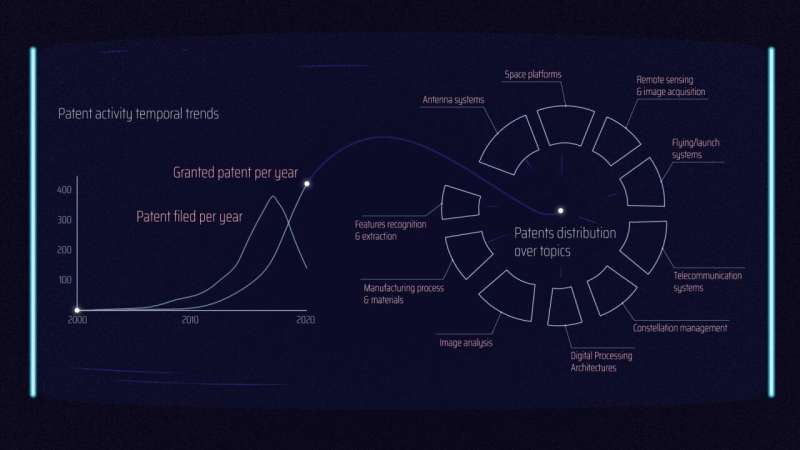This new attitude allows New Space companies to reduce time-to-market and lower the cost of entry to the space business," Skoltech Ph.D. student Nicola Garzaniti says.
Golkar, Garzaniti and their colleagues decided to map New Space to analyze this paradigm shift in the industry. They used the Latent Dirichlet Allocation (LDA), a topic modeling algorithm, to analyze patents' data and the global intellectual property landscape, identifying the most prominent technological trends.
"For this project, we employed a data-based approach to analyze the New Space ecosystem. To do so, we employed a topic modeling technique known as Latent Dirichlet Allocation, or LDA. LDA is a generative statistical model used in the natural language processing domain. Put simply, the model 'reads' the patents and identifies patterns of words in the collection of patents, allowing to connect documents that exhibit similar patterns," Garzaniti explains.
He notes that startup companies and large system integrators as key stakeholders of New Space do not typically publish academic papers but rather prefer filing for patents to protect their intellectual property.
Having looked at 122 organizations that own 933 active patents and patent applications, the team identified ten topics, from remote sensing and image acquisition and launch systems to antenna systems and space platforms. 62% of the portfolio had to do with data related products and services, making data "the most valuable asset of the New Space ecosystem," the authors note.
"Our society is increasingly hungry for data, and for useful insights deriving from data. New Space ventures are contributing to this need by exploiting space infrastructure to generate, process and distribute a huge amount of data, and making available to end users a set of information possible to get only through space systems," Garzaniti notes.
An analysis of trends over time revealed sharp exponential growth from 2007 onward, making that year a tentative cutoff line for the start of the New Space era. The paper also describes the ecosystem of New Space companies, providing a useful overview of the markets and major players based on the existing academic literature.
"As a direct consequence of this work, we identified key topics in space systems development that represent significant opportunities for research and innovation in the short- and mid-term. For instance, we are now actively looking into the topic of active constellation management, and new paradigms for designing and operating satellite systems. From an innovation perspective, we are increasingly interested in looking at the implications and opportunities that arise from the increasing rate of consolidation of the space value chain through vertical integration," Nicola Garzaniti concludes.
Explore further



